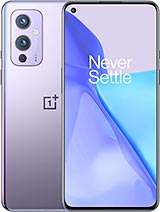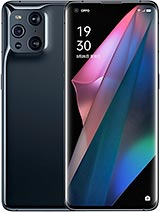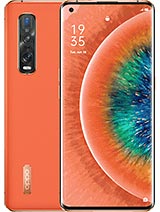Oppo Find X3 Pro vs OnePlus 9 Pro: Which is best for you? By Pocket-lint
The line between Oppo and OnePlus might be blurring at management level and in its homeland of china when it comes to launching smartphones, but here in western markets, they're still taking very different approaches to things for the beginning of 2021 Oppo has its flagship find x3 pro, while OnePlus has the OnePlus 9 pro, but with the prices driving ever higher this year. How do you choose between them and which one should you buy? I'm cam Bunsen from pocket lint and hopefully in this video, I'm going to help you decide while you're here. If you could tap the like button, hit, subscribe and tap the notification bell to make sure you don't miss any more of our videos. That would be truly magnificent. There was a time when Oppo and OnePlus flagships look very similar to each other, but with the latest range. That's no longer true, of course, from the front, they both look practically identical, given they have the same sized skinny, bezel display and a hole, punch camera in the left corner, but turn them over and there's no way anyone's confusing.
These two OPPO's latest premium phone is, unlike anything else on the market. The glass curving up to the camera. Housing is all part of the same glass that makes up the rest of the phone's rear, and that means you get an attractive, seamless, look and feel plus that matte frosted glass on the blue model makes it feel super soft OnePlus has taken a vastly different approach, placing its cameras in a rectangle protrusion, which is attractive in its own right. Each lens, surrounded by a metal ring making them stand out visually, whiles the camera housing is color, matched to whatever the color of the phone is now, despite both of them being quite large phones. The Oppo is noticeably slimmer in the hand.
It feels more nimble and lightweight in the palm than the OnePlus does technically, there's not a lot of difference in measurements, but holding the two yields very different results and, of course, OnePlus has its own alert switch on the side, which is actually a very practical addition. It lets you switch between vibrate and silence and ring modes really easily. Both have metal and glass construction and both are water and dust resistant up to ip68 rating, so whichever one you go for, it should survive being caught in the rain or dropped in a basin full of water. Now, if there's one area, these phones really are basically identical. It's in the display performance.
The two phones have exactly the same: 6.7 inch, LPO AMOLED display capable of reaching refresh rates up to 120 hertz and a peak brightness of 1300 nits. Maximum resolution for both is set at quad, HD, plus or specifically 1440x3216, which gives it a density of 525 pixels per inch, and that means they're among the brightest, sharpest and smoothest displays currently available on any regular phone. Both use an adaptive frame rate technology too. So that means, if you're looking at a still or slow moving page, they adapt to the frame rate needed for that page in the process. That means less power is wasted, refreshing the display and, as a result, uses less battery both even feature always on ambient displays.
Although Oppo does give you more available style options to choose from plus, you can even create your own. Now OnePlus used to be the customization champion with oxygen OS, but Oppo seems to have pulled ahead in this department offering more wallpapers that take advantage of that fluid smooth display and giving you far more fingerprint animation options both sets of software. Let you enable various display features like comfort tone that adapts to white balance based on your current ambient lighting, plus the ability to schedule night modes and kill blue light, but just from a personal preference side. I really like some layers' Oppo has added in color OS when you drop the notification shade as an example, the screen behind it blurs to the background, and you get that distinct feeling. It's a separate layer and I like that the wallpaper picker floats on top of the actual home screen.
So you can see exactly how the wallpaper looks live in real time. As you pick it out. Now, it's not all plain sailing with OPPO's color OS. We did experience some quirks and inconsistencies with the notification system. For instance, they might not appear on the lock screen when they were showing on the always on display.
So you'd have to go and check the app to see what the notification was. OnePlus didn't seem to suffer at all with the inconsistency here. So while I might find opposed prettier and more enjoyable to use OnePlus software seems to be a bit more practical and reliable, but in truth, there's not a lot in it. Now like its displays, there are some clear similarities when looking at the internals of the two phones, namely they both have the snapdragon 8 processors, inside keeping everything ticking over smoothly. They both even use the same speedy, LP, ddr5 ram and UFS 3.1 storage. So that means not only do your apps and games all run really smoothly, but downloads and installations are quick too, especially if you happen to live in a 5g area and can download over 5g.
What's interesting. Here, though, is that while batteries are the same size at 4, 500 William hours, we had slightly better battery life with the OPPO. No doubt this is in part down to its pretty aggressive background task management. Still sometimes we were able to get through two full days with the fine x3 pro where the OnePlus 9 pro was a couple of hours short of making that mark, despite that, both will easily get you through a full day, even if you're someone who's on the move, constantly listening to music making calls and catching a few Pok?mon. On your travels with both being part of the same tech family, you often find similar charging technology in the company's devices, and it's no different here both use a proprietary flash charging system that can reach up to 65 watt speeds, but what's different here is that OnePlus can retain those speeds for longer.
So that means the overall charging time is less. You can fill up the OnePlus battery in less than half an hour, while Oppo will be about 36 minutes so again, there's really not much in it and both charge really quickly. It's in the wireless charging, where the OnePlus 9 players has a clearer advantage. Its warp charges.50 wireless can give you a full battery in 43 minutes, but you do need to use that bespoke wireless charging stand. Opp's, 30 watt charge will take noticeably longer around an hour which still isn't bad, especially if you're someone who just puts it on the nightstand at bedtime.
Now, in our experience, it's in the camera department, where we noticed the most striking differences between these two phones, both have high quality, wide and ultra-wide cameras, but Oppo opted to put the same 50 megapixel sensor in both of them, giving very consistent results between them, both giving color rich detailed and warm shots. The OnePlus 9 pro. However, we found quite inconsistent at times offering photos that look, cool and blue from the primary and warmer shots like the Oppo from its ultrawide. Both phones have a telephoto zoom lens and although Oppo only goes up to two times optical, we found it actually delivered higher quality results than the OnePlus 3.3 times optical zoom lens. It was sharper and delivered relatively decent images up to five times when the OnePlus lost a lot of detail and went quite mushy even at its lowest zoom.
Add that to the fact that Oppo also delivered sharper better looking images in its night mode versus OnePlus nights cape mode, and it's clear that the find x3 pro is the much better camera experience. Overall, that's without mentioning the gimmicky micro lens that lets you get really close into objects and see right into their construction at an almost microscope-like level. It's fun to play with for a couple of days. But after that you tend to forget it's there. So, ultimately, there are likely only a couple of things that will sway you one way or the other on these two phones and a major factor will likely be the price OPPO's.
Top-Tier phone is more expensive than one plus and looking at the spec sheet, there may not be enough difference between them to warrant the extra money for you with that said, given the more consistent and excellent performance of the cameras on the Oppo and the more refined design, particularly on the matte blue model, we think that's extra money worth spending. If you're happy to pony up the extra cash I've been came from pocket lint, you can find me on social media. I'm at Taunton on Twitter. Let me know what you think of these two phones in the comments below which one do you think you'll be going for or which one did you go for? Don't forget. If you love this video, please do hit that like button.
It helps us a great deal, subscribe and tap the notification bell to make sure you don't miss any more of our uploads, and I'll see you again in the next one bye for now.
Source : Pocket-lint



























